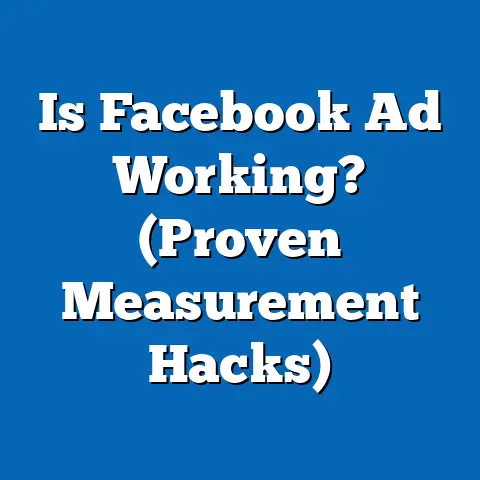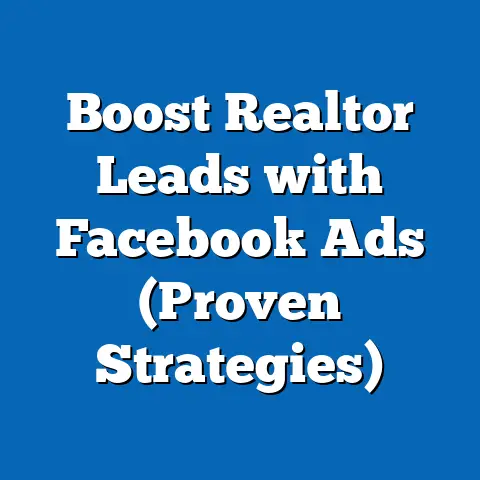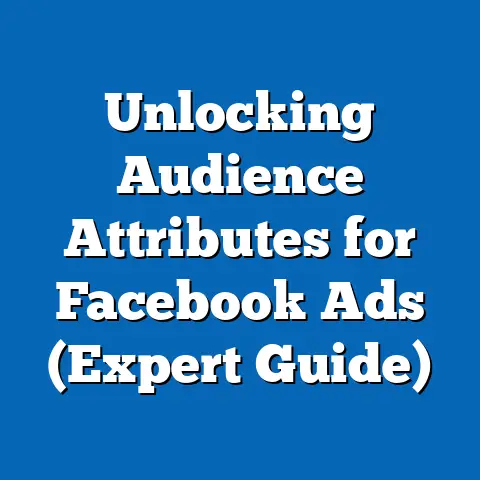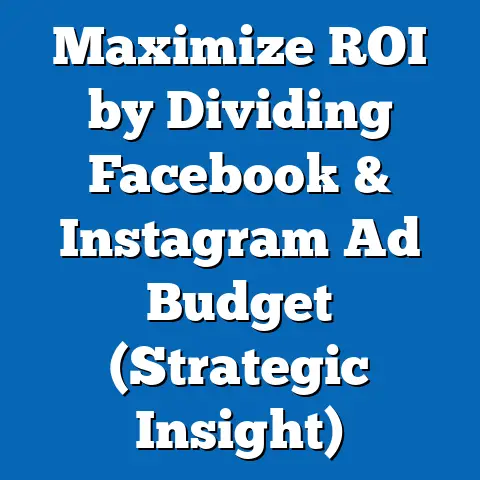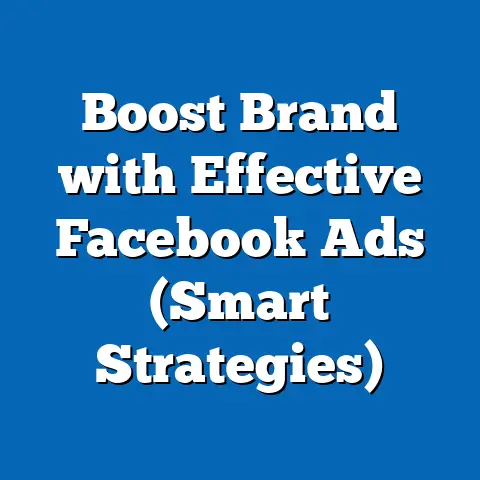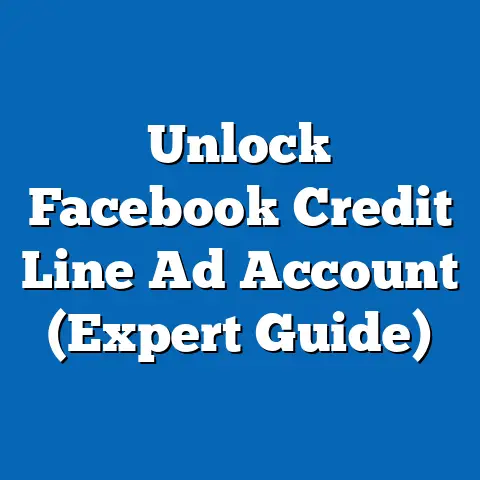Unlock Powerful Facebook Ad Types (Strategic Insights)
Facebook advertising. The very words can conjure up images of both incredible success stories and frustratingly wasted ad spend. I’ve been there, trust me. I remember one of my first campaigns – a blurry image, a generic call to action, and targeting that was about as specific as throwing a dart at a map. The results? Let’s just say I learned a valuable lesson about the importance of strategy!
But here’s the thing: Facebook, or Meta as it’s known now, is a powerhouse. It’s a platform with billions of users, offering unparalleled opportunities to reach your target audience. The key? Understanding the diverse range of ad types available and knowing how to leverage them effectively. Businesses of all sizes can truly benefit from a well-executed Facebook ad strategy. Whether you’re a local bakery looking to boost foot traffic or a global e-commerce brand aiming to increase online sales, the right ad type, targeted to the right audience, can make all the difference.
This guide is designed to walk you through the various types of Facebook ads, providing you with the knowledge and strategic insights you need to create tailored campaigns that resonate with specific audience segments and achieve your marketing goals. Forget the blurry images and generic copy; let’s dive into the world of powerful Facebook advertising!
Expert Tip: Match Your Ad Type to Your Marketing Objective
Before we even begin exploring the different ad types, I want to share a crucial expert tip that I learned the hard way: Always align your ad format with your specific campaign goals. It sounds simple, but it’s a mistake I see marketers make all the time.
Think of it this way: are you trying to build brand awareness? Drive leads? Increase sales? Each objective requires a different approach and, therefore, a different ad format. As digital marketing strategist Neil Patel says, “Choosing the right ad format is like selecting the right tool for the job. Use a hammer for a nail, not a screwdriver.”
For example, if your goal is brand awareness, visually engaging video ads or captivating image ads might be your best bet. If you’re focused on lead generation, Facebook Lead Ads, designed to capture user information seamlessly, are a game-changer. And if you’re an e-commerce business looking to drive sales, Dynamic Ads, which automatically showcase relevant products to users based on their browsing behavior, are essential.
Don’t just pick an ad type because it looks cool or because you saw someone else using it. Take the time to understand your objectives and choose the format that’s most likely to help you achieve them. This simple shift in mindset can drastically improve your campaign performance. Remember, the best ad is the one that effectively meets your goals.
Overview of Facebook Ad Types
Facebook offers a diverse array of ad types, each designed to serve a specific purpose and cater to different marketing objectives. From simple image ads to interactive collection ads, the options can feel overwhelming. But don’t worry, I’m here to break it down for you.
Here’s a quick overview of some of the most popular Facebook ad types:
- Image Ads: The classic, straightforward option. Simple, yet effective when done right.
- Video Ads: Highly engaging and perfect for storytelling.
- Carousel Ads: Showcase multiple products or features in a single ad.
- Slideshow Ads: Create a video-like experience with static images.
- Collection Ads: Ideal for e-commerce, allowing users to browse and purchase products directly within Facebook.
- Lead Ads: Capture leads seamlessly without users leaving the platform.
- Dynamic Ads: Automatically promote relevant products to users based on their behavior.
Each of these ad types has its own unique strengths and weaknesses, and the key to successful Facebook advertising lies in understanding these nuances and choosing the right ad type for your specific campaign goals.
In-depth Exploration of Each Ad Type
Now, let’s dive deeper into each of these ad types, exploring their features, benefits, and best practices.
Image Ads
Image ads are the workhorse of Facebook advertising. They’re simple, versatile, and can be incredibly effective when done right. The key to a successful image ad lies in the visual itself.
Why Image Ads Work:
- Simplicity: They’re easy to create and understand.
- Versatility: They can be used for a wide range of purposes, from brand awareness to driving traffic to your website.
- Cost-Effectiveness: Often more affordable than video ads.
Best Practices:
- High-Quality Images: Use crisp, clear, and visually appealing images that grab attention. Avoid blurry or pixelated images.
- Compelling Copy: Write concise and persuasive ad copy that complements the image and encourages users to take action.
- Clear Call to Action: Tell users exactly what you want them to do (e.g., “Shop Now,” “Learn More,” “Sign Up”).
- Relevance: Make sure the image is relevant to your product, service, or offer.
My Experience: I once ran an image ad campaign for a local coffee shop, using a mouth-watering photo of their signature latte. The results were amazing! Foot traffic increased significantly, and the coffee shop saw a noticeable boost in sales. The key was the high-quality image and the clear call to action: “Try our signature latte today!”
Takeaway: Don’t underestimate the power of a well-executed image ad. Focus on creating visually appealing images and writing compelling copy that drives action.
Video Ads
Video ads are the rockstars of Facebook advertising. They’re highly engaging, capture attention quickly, and can be incredibly effective for storytelling.
Why Video Ads Work:
- Engagement: Videos are more engaging than static images, capturing attention and holding it for longer.
- Storytelling: Videos allow you to tell a story and connect with your audience on an emotional level.
- Information Delivery: Videos can convey a lot of information in a short amount of time.
Best Practices:
- Grab Attention Quickly: The first few seconds of your video are crucial. Make sure to grab the viewer’s attention immediately.
- Mobile-Friendly: Optimize your videos for mobile viewing, as most Facebook users access the platform on their smartphones.
- Subtitles: Add subtitles to your videos, as many users watch videos with the sound off.
- Clear Message: Make sure your message is clear and easy to understand.
- Compelling Call to Action: Tell viewers what you want them to do after watching the video.
My Experience: I ran a video ad campaign for a travel agency, showcasing stunning footage of exotic destinations. The video ad was a huge success, generating a large number of leads and driving significant traffic to the agency’s website. The key was the high-quality video footage and the compelling storytelling, which transported viewers to those beautiful destinations.
Takeaway: Video ads are a powerful tool for engaging your audience and telling your story. Focus on creating high-quality videos that capture attention quickly and deliver a clear message.
Carousel Ads
Carousel ads are a dynamic and engaging ad format that allows you to showcase multiple products or features in a single ad. They’re perfect for e-commerce businesses, showcasing product lines, or telling a story in a visually compelling way.
Why Carousel Ads Work:
- Multiple Products: Showcase multiple products or features in a single ad.
- Engaging Format: The carousel format is interactive and encourages users to swipe through the different cards.
- Storytelling: Tell a story by arranging the cards in a specific order.
Best Practices:
- High-Quality Images: Use high-quality images that are visually appealing and consistent in style.
- Compelling Headlines: Write compelling headlines that grab attention and encourage users to click.
- Clear Descriptions: Provide clear and concise descriptions for each product or feature.
- Relevant Landing Pages: Link each card to a relevant landing page on your website.
- Tell a Story: Use the carousel format to tell a story and engage your audience.
My Experience: I used carousel ads for a clothing retailer, showcasing different outfits and accessories. Each card featured a different outfit, with a compelling headline and a clear description. The carousel ad was a huge success, driving significant traffic to the retailer’s website and increasing sales.
Takeaway: Carousel ads are a great way to showcase multiple products or features in a single ad. Focus on creating visually appealing cards and writing compelling headlines that encourage users to click.
Slideshow Ads
Slideshow ads are a simple and cost-effective way to create a video-like experience with static images. They’re perfect for advertisers who don’t have high-quality video content but still want to leverage the power of visual storytelling.
Why Slideshow Ads Work:
- Cost-Effective: More affordable than video ads.
- Easy to Create: Simple to create using existing images.
- Video-Like Experience: Create a video-like experience with static images.
Best Practices:
- High-Quality Images: Use high-quality images that are visually appealing and consistent in style.
- Compelling Text: Add text overlays to your images to convey your message.
- Transitions: Use smooth transitions between images to create a seamless experience.
- Music: Add background music to enhance the mood and create a more engaging experience.
- Clear Call to Action: Tell viewers what you want them to do after watching the slideshow.
My Experience: I used slideshow ads for a local spa, showcasing different treatments and services. The slideshow featured relaxing images of the spa, with text overlays describing the benefits of each treatment. The slideshow ad was a success, driving traffic to the spa’s website and increasing bookings.
Takeaway: Slideshow ads are a great way to create a video-like experience with static images. Focus on using high-quality images and adding compelling text overlays to convey your message.
Collection Ads
Collection ads are a visually immersive ad format designed to streamline the shopping experience for users. They’re perfect for e-commerce businesses looking to showcase their product catalog and drive sales directly within Facebook.
Why Collection Ads Work:
- Immersive Experience: Create a visually immersive shopping experience for users.
- Product Catalog Integration: Seamlessly integrate your product catalog with your Facebook ads.
- Direct Sales: Drive sales directly within Facebook.
Best Practices:
- High-Quality Images: Use high-quality images that showcase your products in the best possible light.
- Relevant Products: Showcase products that are relevant to the user’s interests and browsing history.
- Mobile-Optimized: Optimize your collection ads for mobile viewing.
- Fast Loading Times: Ensure your landing pages load quickly to avoid losing potential customers.
- Clear Call to Action: Tell users what you want them to do (e.g., “Shop Now,” “View Details,” “Add to Cart”).
My Experience: I used collection ads for an online furniture store, showcasing different furniture collections. The collection ad featured high-quality images of the furniture, with clear descriptions and prices. The collection ad was a huge success, driving significant traffic to the store’s website and increasing sales.
Takeaway: Collection ads are a powerful tool for e-commerce businesses looking to showcase their product catalog and drive sales directly within Facebook. Focus on using high-quality images and showcasing relevant products to your target audience.
Lead Ads
Lead ads are a game-changer for businesses looking to capture user information without users leaving Facebook. They’re perfect for generating leads, collecting email addresses, and building your customer database.
Why Lead Ads Work:
- Seamless Experience: Capture user information without users leaving Facebook.
- Mobile-Friendly: Optimized for mobile viewing.
- Pre-Filled Forms: Facebook pre-fills the lead form with user information, making it easy for users to submit their details.
Best Practices:
- Clear Value Proposition: Clearly explain the value proposition of your offer.
- Concise Forms: Keep your lead forms short and simple.
- Privacy Policy: Include a link to your privacy policy.
- Follow-Up: Follow up with leads promptly.
- A/B Testing: Test different lead form variations to optimize your conversion rates.
My Experience: I used lead ads for a real estate agency, offering a free home valuation report. The lead ad was a huge success, generating a large number of leads and allowing the agency to build their customer database. The key was the clear value proposition and the concise lead form, which made it easy for users to submit their details.
Takeaway: Lead ads are a powerful tool for generating leads and building your customer database. Focus on creating clear and concise lead forms and offering a compelling value proposition to your target audience.
Dynamic Ads
Dynamic ads are a powerful tool for e-commerce businesses looking to automatically promote relevant products to users based on their online behavior. They’re perfect for retargeting website visitors, showcasing products they’ve viewed, and driving sales.
Why Dynamic Ads Work:
- Personalization: Automatically promote relevant products to users based on their online behavior.
- Retargeting: Retarget website visitors and showcase products they’ve viewed.
- Automation: Automate your advertising efforts.
Best Practices:
- Product Catalog: Ensure your product catalog is up-to-date and accurate.
- Pixel Implementation: Implement the Facebook pixel on your website to track user behavior.
- Dynamic Creative: Use dynamic creative to personalize your ads with relevant product images and descriptions.
- Targeting: Target users based on their browsing history, purchase history, and interests.
- Optimization: Continuously optimize your dynamic ads based on performance data.
My Experience: I used dynamic ads for an online shoe store, retargeting website visitors who had viewed specific shoe styles. The dynamic ads showcased the shoes they had viewed, along with other similar styles. The dynamic ads were a huge success, driving significant traffic back to the store’s website and increasing sales.
Takeaway: Dynamic ads are a powerful tool for e-commerce businesses looking to personalize their advertising and drive sales. Focus on implementing the Facebook pixel on your website and creating dynamic creative that showcases relevant products to your target audience.
Choosing the Right Ad Type for Your Campaign Goals
Now that we’ve explored the different types of Facebook ads, let’s talk about how to choose the right ad type for your specific campaign goals. This is where strategy comes into play.
Here’s a breakdown of which ad types are best suited for different marketing objectives:
- Brand Awareness: Image ads, video ads, slideshow ads.
- Website Traffic: Image ads, video ads, carousel ads.
- Lead Generation: Lead ads.
- Sales: Carousel ads, collection ads, dynamic ads.
- Engagement: Video ads, carousel ads.
Remember, these are just general guidelines. The best ad type for your campaign will depend on your specific target audience, budget, and creative assets.
Examples of Successful Ad Type Alignments:
- A local restaurant uses image ads to showcase their daily specials and drive foot traffic.
- An online clothing store uses carousel ads to showcase different outfits and accessories, driving traffic to their website.
- A real estate agency uses lead ads to generate leads for potential homebuyers.
- An e-commerce business uses dynamic ads to retarget website visitors and drive sales.
Metrics to Consider:
When evaluating the success of each ad type, consider the following metrics:
- Reach: The number of people who saw your ad.
- Impressions: The number of times your ad was displayed.
- Click-Through Rate (CTR): The percentage of people who clicked on your ad.
- Conversion Rate: The percentage of people who took the desired action after clicking on your ad (e.g., making a purchase, filling out a lead form).
- Cost Per Click (CPC): The average cost you paid for each click on your ad.
- Cost Per Acquisition (CPA): The average cost you paid for each conversion.
By tracking these metrics, you can gain valuable insights into the performance of your ads and make data-driven decisions to optimize your campaigns.
Conclusion
Unlocking the power of Facebook advertising requires a deep understanding of the different ad types available and how to leverage them effectively. From simple image ads to dynamic collection ads, each ad type offers unique benefits and is best suited for different marketing objectives.
By taking the time to understand your target audience, define your campaign goals, and choose the right ad type, you can create tailored campaigns that resonate with your audience and achieve your desired outcomes.
Remember, Facebook advertising is an ever-evolving landscape. New features, ad types, and best practices are constantly emerging. It’s essential to stay informed and adaptable to stay ahead of the curve. Experiment with different formats, track your results, and continuously optimize your campaigns to maximize your ROI.
Call to Action
Now it’s your turn! I encourage you to experiment with different Facebook ad types and share your experiences in the comments below. What ad types have worked best for you? What challenges have you faced?
For more insights on digital marketing strategies and Facebook advertising, subscribe to my newsletter. I’ll share my latest tips, tricks, and strategies to help you succeed in the world of digital marketing. Let’s connect on social media and continue the conversation!

